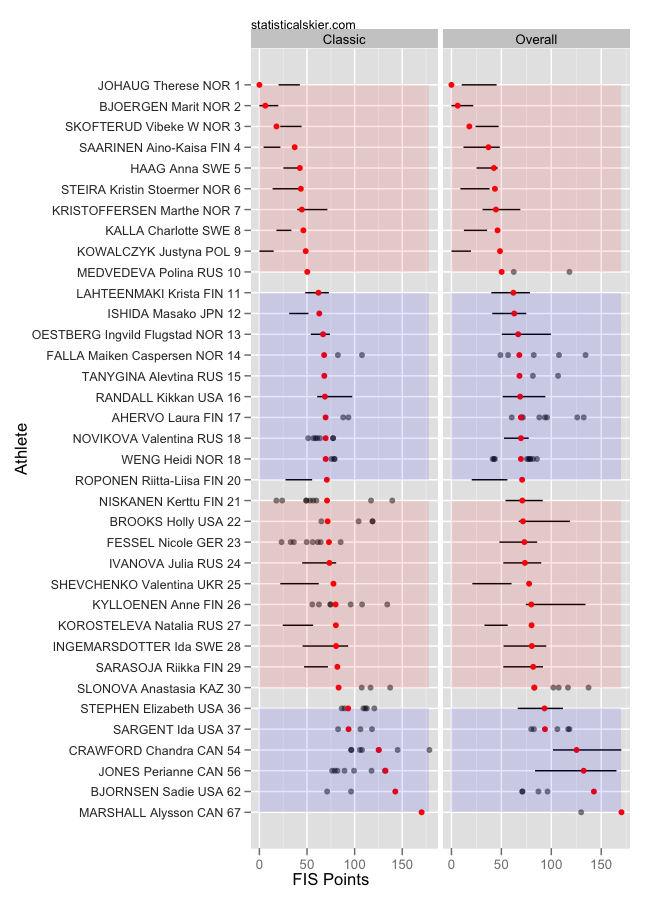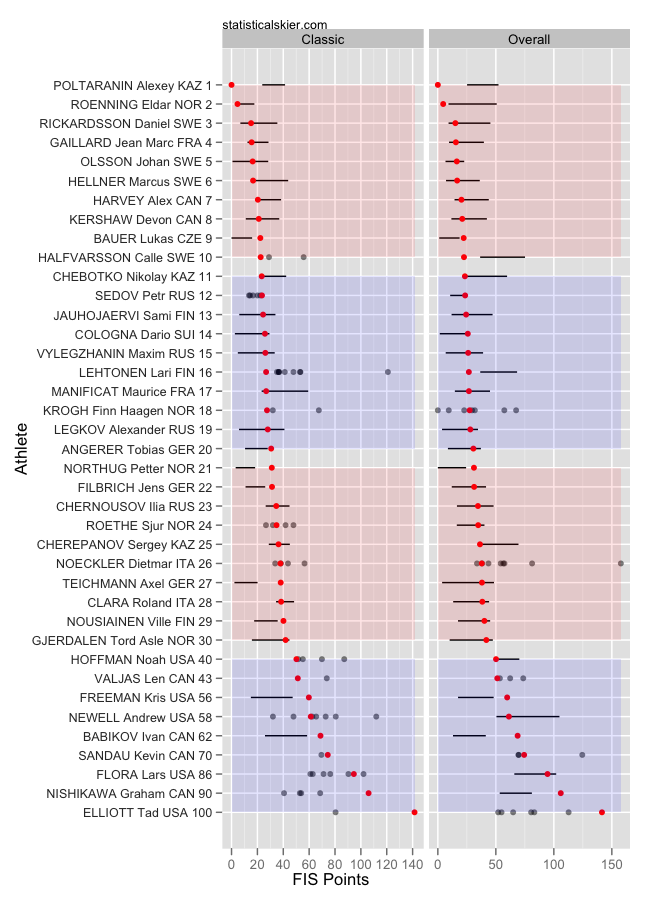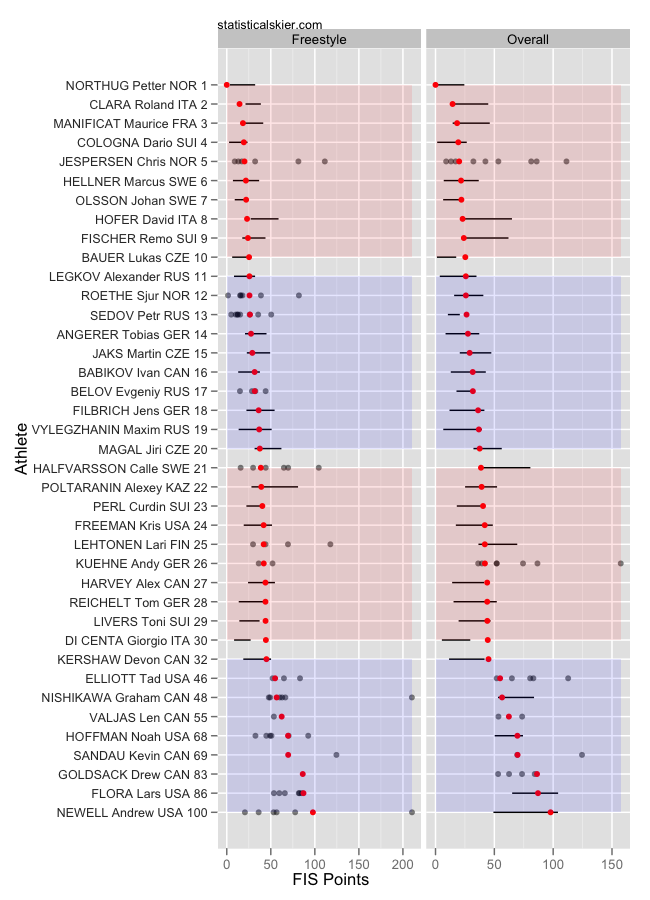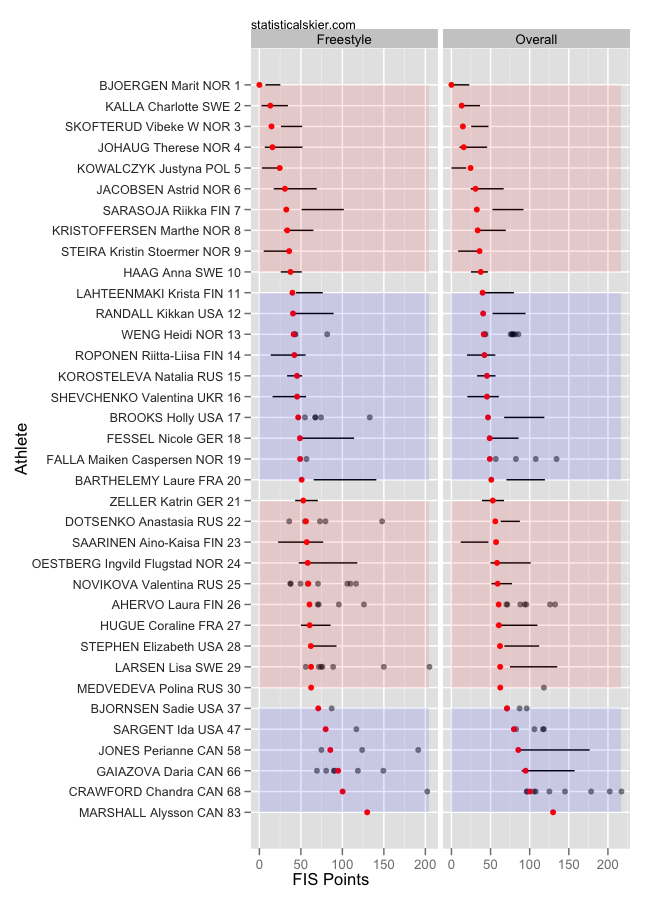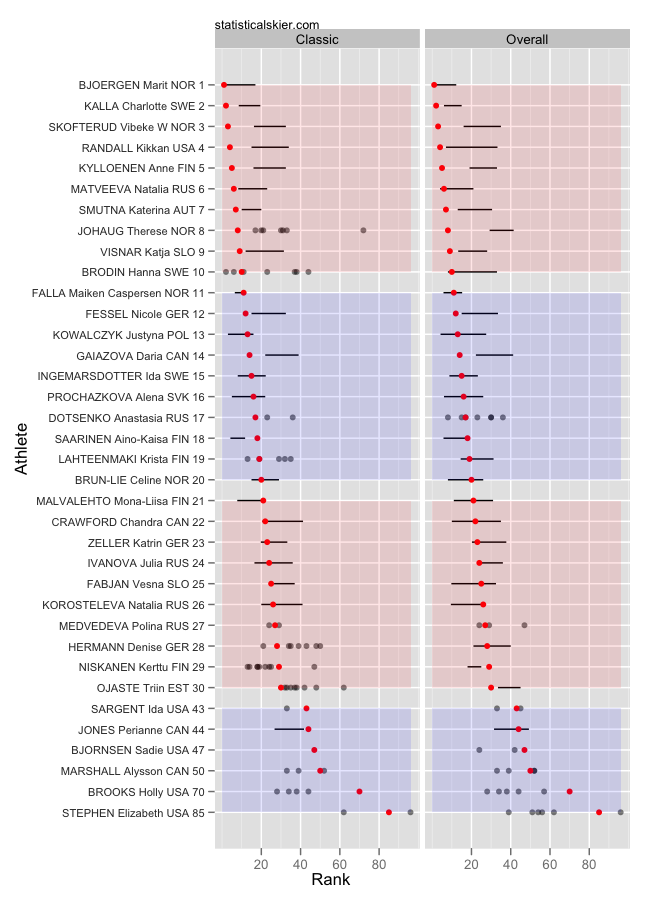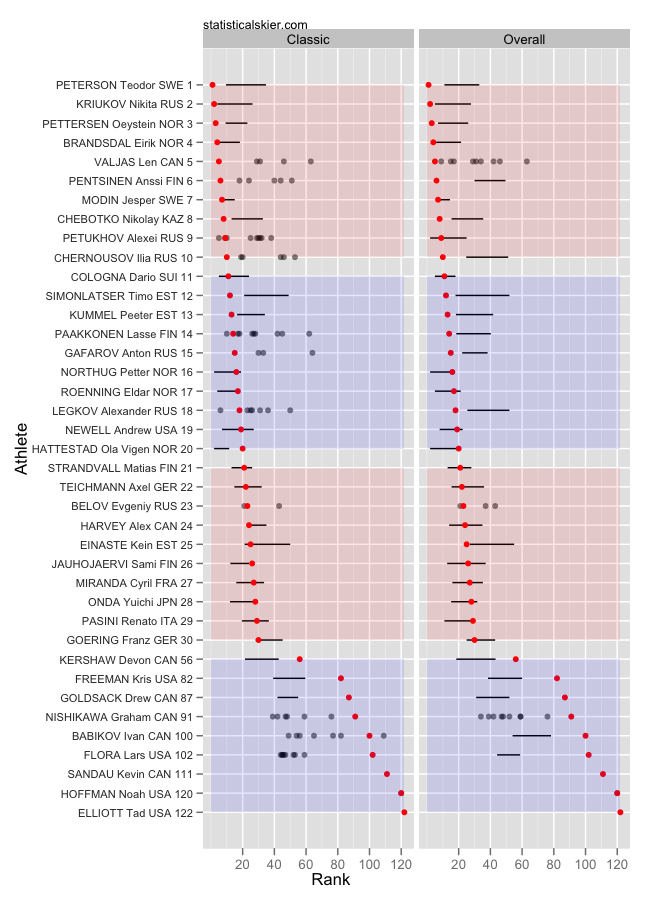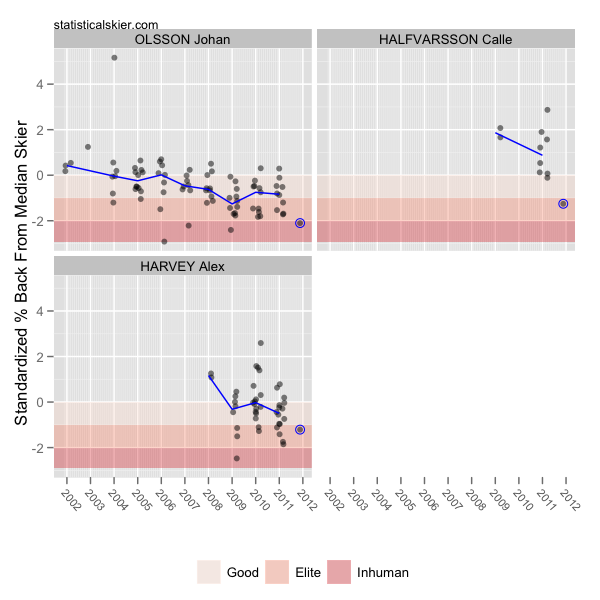I’ll have a post up on Wednesday with some items from this weekends World Cup races. But I’ve been busy over the off-season and the site has seen some fairly major changes, so I need to take a second to describe what’s new.
First, some general housekeeping. Regular readers may notice that I’m going to keep to a rigid posting schedule this winter of Mon-Wed-Fri (hopefully, this will appease the haters). There are several reasons for this, but mostly I’m just a lot busier. I’m working full-time instead of part-time and the Statistical Wife and I are expecting our first kid any week now. So, I’m going to have my hands full this winter!
Second, I need to acknowledge the enormous contribution that Brayton Osgood, (former professional ski racer, current Dartmouth College DTeam coach, all around great guy) Â has made to this site. I haven’t mentioned his presence here before, but he’s been invaluable in much of the behind the scenes web stuff. While I’m ultimately responsible for all the content on the site, Brayton has also been an important sounding board while I’m writing posts and analyzing data. I get the lion’s share of the attention for this site, but Brayton is very much a part of the Statistical Skier team. Credit where credit is due.
Ok…here’s what new:
User Generated Graphs
There’s a link above the tabs to data.statisticalskier.com (or at least there should be; the PHP was acting odd this weekend. If you don’t see it, try clearing your cache). This was by far the biggest project, and allows you guys to generate some of the basic types of graphs I use on the site. There is a FAQ tab on that page that runs through some of the basics, but hopefully the forms should be fairly self explanatory.
Please keep in mind that this page is still in beta! It might be slow, it might not work at all at times. We’ll be continuing to work on it, so hopefully it will get more polished and stable over time.
Head over there and have fun playing around!
Power Rankings
I know, I know. Not another points system for ranking athletes.
But if you think about the tools we have now, they are all percent back based systems like FIS points and they’re either a little too specific (FIS points for a specific race) or too general (FIS points profile from the entire past year). What I’d like to see is something more akin to ESPN’s Power Rankings for baseball, that captures who’s hot right now. So I went about building it.
My starting point was a basic ELO system, like what is widely used in the chess world. It’s based on the idea that the best way to compare performance is to use individual head-to-head match-ups between two skiers. The general idea is that everyone starts with a big pile of points. Let’s be concrete and think of them as a pile of stones. If you ski in a race, that constitutes multiple ‘matches’ against all the other skiers in that race. Each skier that beats you takes a few stones from your pile and adds them to their pile. Similarly, you take a few stones from each pile of the skiers that you beat. The number of stones that changes hands is weighted according the time gap between the two skiers and the relative size of skier’s piles of stones. There are several other minor tweaks and adjustments, but that’s the basic idea.
This is trickier to implement than it may seem. It’s a little finicky and can be sensitive to fairly arbitrary decisions about how much weight to apply to various components. But I think I’ve got it working fairly well, so we’ll give it a shot. The idea here is that this is not a serious performance measure, but a fun one. You know, the sort of thing you argue about with your coworkers at the water cooler. So don’t take it too seriously.
The current top ten ranking will always be in the tabs in the right sidebar. The distance rankings have been updated to include this weekend’s World Cup opener. (These Power Rankings use the points from the close of the previous season as a starting point.) Each discipline lists two values, the change in rank from last week and the change in their score. Keep in mind that these scores have no units. They just represent ‘the number of stones in someone’s pile’. I’ll be updating these Power Rankings more or less weekly (following the WC schedule), and I may write a post or two talking about any interesting movement they show.
If you’re at all familiar with ELO ranking systems, you may be aware that one of their limitations is that they assume a reasonably ‘well-mixed’ population. What that means is that it assumes that everyone is racing against everyone else fairly regularly. So the World Cup circuit is a reasonable group to apply this to, since it consists of a mostly fixed group of skiers competing against each other regularly. I have tinkered with extending this to all races, but it performs poorly. As you might imagine, the North American and European racing communities are not always very well mixed, so you end up with some pretty wild behavior.
Race Snapshots
I feel like people really liked the race snapshot graphs I made last season, but there were just too many of them, and they cluttered up the main page and the RSS feed. So the race snapshot graphs will all be found on a separate page (see the tab above) and will not appear in any RSS feeds. Moving these of the front page, and dialing things back to three posts a week should keep the content here more manageable and focused (and hopefully, higher quality).
Anyway, that’s what Brayton and I have been working on all summer. Enjoy!
[ad#AdSenseBanner]
Tagged elo, housekeeping, power ranking, World Cup
